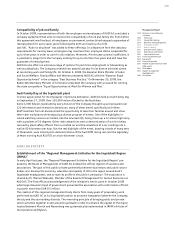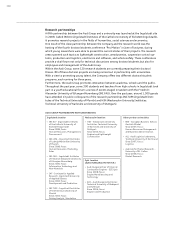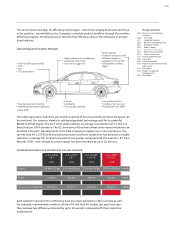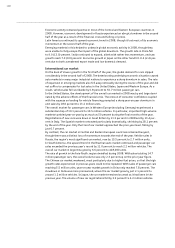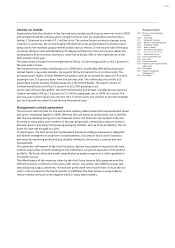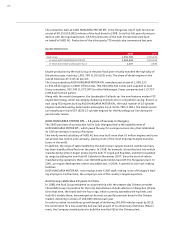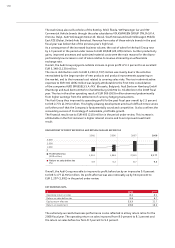Audi 2008 Annual Report Download - page 168
Download and view the complete annual report
Please find page 168 of the 2008 Audi annual report below. You can navigate through the pages in the report by either clicking on the pages listed below, or by using the keyword search tool below to find specific information within the annual report.
149
Management Report
128 Business and underlying
situation
128 The Group
131 Corporate steering
134 Research and development
136 Employee matters
139 Audi in society
141 Environmental aspects
147 Economic environment
150 Course of business
157 Financial performance
159 Net worth
160 Financial position
160 Report on post-balance sheet
date events
161 Risk report
165 Report on expected
developments
169 Disclaimer
German car market
Expectations that the situation in the German auto market would improve were not met in 2008
and compared with the previous year’s already low level, new car registrations declined by a
further 1.8 percent to a total of 3.1 million units. The various factors serving to depress sales
included, in particular, the at times highly inflated fuel prices and protracted consumer uncer-
tainty due to the repeated postponement of the road tax reform. In the second half of the year,
consumer reticence was exacerbated by the deepening financial crisis and concerns about the
consequences of an economic downturn, which led to drastic falls in new registrations in the
final months of the year.
The diesel share of total first-time registrations fell by 3.6 percentage points to 44.1 percent in
the year under review.
Vehicle exports by German manufacturers in 2008 were considerably affected by downward
market trends in key sales markets. Car exports fell by 4.0 percent to 4.1 million units. The
principal export region of other Western European countries accounted for sales of 2.4 million
passenger cars, 8.9 percent down from the previous year. The continuing crisis on the U.S.
automobile market severely inhibited exports to the United States. The export volume of
German manufacturers fell by 5.3 percent to 522,000 passenger cars.
On the back of lower demand for cars both domestically and abroad, manufacturing output by
German carmakers fell by 3.2 percent to 5.5 million passenger cars in 2008. As a result, the
previous year’s record figure was not met. At 5.3 million units, the number of German-branded
cars built abroad was down 0.6 percent on the previous year.
Management’s overall assessment
The economic environment for the automotive industry deteriorated with unprecedented speed
and by an unexpected degree in 2008. Whereas the cost pressure continued to rise in the first
half due to escalating energy and raw materials prices, the financial crisis spread to the real
economy in many major auto markets as the year progressed, prompting a massive slump in
demand. Even in previously fast-growing emerging markets, such as China and Russia, the car
boom for now was brought to a halt.
In recent years, the Audi Group has implemented extensive strategic measures to safeguard
and further strengthen its long-term competitiveness. One area on which it has focused is
permanently improving productivity by steadily refining its own product, process and cost
management.
The systematic refinement of the Audi Production System has played an important role here.
Another major pillar of Audi’s strategy is the methodical, long-term expansion of its product
portfolio. The fresh, attractive model range featuring modern engines is a vital ingredient to
its market success.
The effectiveness of the measures taken by the Audi Group became fully apparent amid the
difficult economic conditions of the year under review. As a whole, the 2008 fiscal year saw
manufacturing output, deliveries, revenue and profit reach new record levels. Only as the eco-
nomic crisis worsened in the fourth quarter of 2008 was the Audi Group no longer able to
remain entirely immune to the negative trend in many sales markets.


